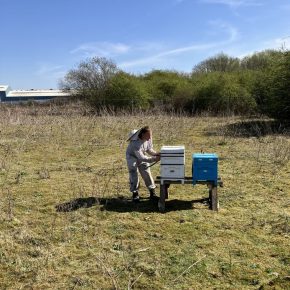
The hazards of working at height and the appropriate risk and safety procedures
GUEST BLOG: Hannah Spruce – High Speed Training
Working at height is the biggest cause of fatalities and major injuries in the construction industry. Falls from height account “for nearly three in ten (29%) fatal injuries to workers” according to HSE statistics.
The risks that accompany working at height are serious, and the regulations are in place to save lives. Working at height is dangerous, and made more so by the attitudes that surround health and safety law.
When an employer spends time putting precautions in place it’s not a waste of time, nor is it an exercise in box-ticking, but it’s a critical element of his or her job. It’s a part of their job that saves lives.
Myths about health and safety are so widespread because employers consistently undermine the reality of why these procedures exist. Quips like “its health and safety gone mad” may seem harmless, yet the undercutting of H&S legislation means that employers increasingly place little value on protecting employees from unnecessary risks. Which is why 2016 has seen the arrival of harsher sentencing laws, these are intended to impress the gravity of health and safety legislation on employers.
Health and safety is not a joke. And, it has not gone mad.
Last year, a worker who fell 5.9 metres was left with internal bleeding, a collapsed lung and fractures to his pelvis and left arm. He was left unable to work and the three companies at fault were fined a total of £90,000.
In 2012, just weeks before his wedding John Altoft was killed in a fall from height after he was struck by falling debris inside an industrial tower. He fell several metres where he sustained the head injury that took his life. The companies responsible were fined a collective £1.3 million.
These incidents could and should have been prevented. The lives of construction workers are not expendable.
What is the hierarchy of control measures and how can you prevent falls?
The HSE’s working at height hierarchy is a set of eight control measures that outline the risk reduction measures as defined in the Work at Height Regulations 2005.
The idea is that you only progress through the hierarchy when a measure isn’t practicable e.g. the first step is to avoid working at height where possible. Then, when it becomes necessary to work at height, you would look at the next step on the scale to help you assess and manage risks.
The HSE hierarchy is based on (1.) avoiding working at heights, (2.) preventing exposure to risks, and (3.) reducing the consequences of a fall.
The following information provides more details on the methods you can employ to comply with HSE legislation.
Avoid working at height.
Wherever it’s possible, the HSE recommends avoiding the risk completely if you can. This means using extended tools or bringing materials down from height to work on at ground level.
Prevent falls using collective equipment (equipment that protects everyone) and PPE (personal protective equipment).
Reduce the consequences of a fall if an accident did happen.
Consider how you could use PPE and collective equipment to minimise the potential distance and consequences of any fall risk.
Use appropriate training and instruction to minimise the risk and consequences of a fall for those who work at height and for those who undertake the risk assessment.
Before commencing projects which involve any form of work at height, always make sure to apply the principles of the working at height hierarchy of control measures. Download this free PDF and keep it handy for future work so that you can ensure that which is most important: the safety of your co-workers.
Latest news

30th April 2025
Digital Construction Week announces seminar programme for its landmark 10th edition
Digital Construction Week (DCW) returns to ExCeL London on 4 – 5 June 2025 with its most impactful programme yet. It brings together the best and brightest from across AECO, for two days of practical learning and idea sharing.
Posted in Articles, Building Industry Events, Building Industry News, Building Products & Structures, Building Services, Building Systems, Exhibitions and Conferences, Information Technology, news, Restoration & Refurbishment, Retrofit & Renovation, Seminars
29th April 2025
Senior pledges to ‘bee’ part of the solution with new biodiversity initiative
Senior Architectural Systems has installed its first on-site beehive, marking another step forward in its commitment to sustainability and biodiversity.
Posted in Articles, Building Industry News, Building Products & Structures, Building Services, Curtain Walling, Doors, Glass, Glazing, Innovations & New Products, news, Restoration & Refurbishment, Retrofit & Renovation, Sustainability & Energy Efficiency, Walls, Windows
29th April 2025
West Fraser range delivering key benefits for South-East carpentry company
An experienced carpenter and building site manager who has recently set up his own company is using high performance panel products from the West Fraser range.
Posted in Articles, Building Industry News, Building Products & Structures, Building Systems, Case Studies, Garden, Restoration & Refurbishment, Retrofit & Renovation, Sustainability & Energy Efficiency, Timber Buildings and Timber Products
29th April 2025
CPD Courses Available Online From Ecological Building Systems
Ecological Building Systems, a leading supplier of natural building products for sustainable construction, has revealed its comprehensive CPD programme for the year ahead.
Posted in Articles, Building Industry Events, Building Industry News, Building Products & Structures, Building Services, Continuing Professional Development (CPD's), Information Technology, Innovations & New Products, Insulation, Restoration & Refurbishment, Retrofit & Renovation, Seminars, Sustainability & Energy Efficiency, Training, Walls, Waste Management & Recycling
 Sign up:
Sign up: